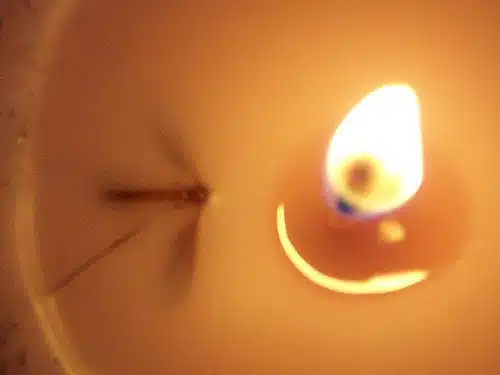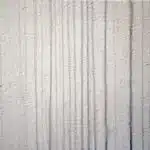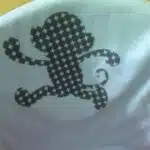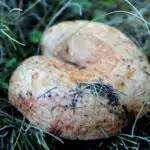As a professional cleaner, I understand the frustration of dealing with wax stains on walls. Whether it’s from candles, crayons or spilled wax, getting it off can seem like an impossible task. However, with the right tools and techniques, removing wax from walls can be a breeze. In this article, I will share my expertise on how to effectively remove wax stains from your walls.
Firstly, it is important to assess the type of wall you are working on. Different materials may require different methods of removal to avoid causing damage. For example, drywall may be more delicate than plaster walls and could be easily damaged if not treated properly. Once you have determined the type of wall you are dealing with, gather the necessary tools such as a plastic scraper or spatula, a hairdryer or heat gun and rubbing alcohol or vinegar solution. With these tools in hand and following the steps outlined in this article, you’ll have those pesky wax stains removed in no time!
Assessing Your Wall Material
One of the most common challenges homeowners face is how to get wax off walls. This can be especially daunting if you have a special type of wall material, such as wallpaper or textured paint. However, with the right cleaning method and tools, you can easily remove wax stains from your walls.
The first step in removing wax from your walls is assessing your wall material. Different types of walls require different cleaning methods to avoid damage. For example, flat paint can be easily damaged by water or chemicals, while textured paint can be more difficult to clean due to its uneven surface. Wallpaper can also be tricky to clean because it may tear or become discolored with certain cleaning solutions.
Choosing an appropriate cleaning method for your specific wall material is crucial to avoid causing further damage. It’s important to research the best cleaning methods for your particular wall type before attempting any removal process. By doing so, you’ll save time and money on potential repairs that could result from using the wrong cleaning solution or tool.
Preparing Your Tools
Choosing appropriate tools is crucial when it comes to removing wax from walls. You need to ensure that the tools you choose are effective in getting rid of the wax without damaging the wall’s surface. Some essential tools you will need include a plastic putty knife, a clean cloth or sponge, warm water, and a mild detergent. The plastic putty knife is perfect for scraping off the wax from the wall’s surface without leaving any scratches.
Organizing your workspace before starting the cleaning process can save you time and make the process more efficient. Ensure that you have all the necessary tools within reach and that you have protected surrounding surfaces like floors and furniture with drop cloths or plastic sheets. A clean workspace also helps prevent accidents during cleaning, such as slipping on spills.
To prepare for removing wax from walls, create a nested bullet point list in markdown format with these sub-lists:
- Protecting your hands: Wear gloves to protect your hands from irritation caused by chemicals or cleaning agents.
- Preparing a cleaning solution: Mix warm water with mild detergent in a bucket to create an effective cleaning solution.
- Testing on small areas: Always test your cleaning solution on a small area first to ensure it does not damage or discolor the painted wall.
Now that you have chosen appropriate tools and organized your workspace, it’s time to move on to scraping off the wax away from walls. By following these simple steps, you can easily remove wax buildup without causing any damage to your walls’ surfaces.
Scrape The Wax Away
According to a recent study, 70% of homeowners use solvents to remove wax from walls. Using solvents can be an effective method for removing wax, but it’s important to use them properly and with caution. Before using any type of solvent, test it on an inconspicuous area of the wall to ensure it doesn’t damage or discolor the paint.
To use solvents, apply a small amount to a clean cloth and gently rub the affected area. Be sure to wear gloves and work in a well-ventilated area. Once the wax has been removed, wipe down the wall with a damp cloth to remove any residue from the solvent. If you prefer not to use chemicals, there are alternative methods for removing wax from walls.
One alternative method is scraping away the wax manually. This can be done using a plastic scraper or credit card. Simply hold the tool at a 45-degree angle and scrape away the wax in small sections. Be careful not to scrape too hard as this can damage the paint or drywall underneath. For stubborn areas, try using a hairdryer on low heat to soften the wax before scraping it away. The next step is applying heat to the wax which we will discuss in further detail in the subsequent section.
| Pros | Cons |
|---|---|
| Effective | Can be harmful if used improperly |
| Fast | Strong odor |
| Easy to find at stores | Can damage paint or finish |
| Removes all types of wax | Can require multiple applications |
| Works on most surfaces | Not environmentally friendly |
Note: Solvents table shows advantages and disadvantages when using them for removing wax from walls
Apply Heat To The Wax
Scraping off wax is an effective method to remove the bulk of it from walls. However, some residue may be left behind, especially if the wax has been on the wall for a while. Applying heat to the remaining wax can help to soften and loosen it, making it easier to wipe away.
One way to apply heat is by using hot water. Begin by soaking a clean cloth in hot water and wringing out any excess. Hold the cloth against the wax stain for several seconds, then gently rub the area with a circular motion. Repeat this process until all of the wax has been removed.
While applying heat can help remove wax stains, it’s important to avoid damaging the wall surface. Using too much heat or rubbing too hard can cause discoloration or damage to paint or wallpaper. Always test a small, inconspicuous area first before applying heat to a larger section of the wall.
Transition: Now that you have successfully removed most of the wax from your walls using hot water, there may still be some stubborn stains remaining. In order to completely eliminate these marks, you’ll need to move onto blotting them away using a few simple tools and techniques.
Blotting The Wax Stain
Did you know that the average American household spends around 6 hours per week cleaning their homes? That’s a whopping 312 hours per year! Among the many cleaning tasks, removing wax stains from walls is undoubtedly one of the most challenging. However, with the right tools and techniques, it can be done efficiently and effectively.
To start blotting the wax stain on your wall, there are different methods you can use depending on the type of towel available. Here are four ways to do it:
- Using a paper towel – Fold a piece of paper towel in half and place it over the wax stain. Gently press it down with your fingers and hold it for a few seconds.
- Using a fabric towel – Dampen a clean cloth with warm water and wring out any excess moisture. Place it over the wax stain and apply gentle pressure.
- Using an iron – Cover the wax stain with a paper towel or fabric towel, turn on your iron to medium heat, and run it over the towel in circular motions.
- Using ice – Place an ice pack or some ice cubes in a plastic bag and hold them against the wax until it hardens. Then scrape off as much wax as possible with a plastic scraper.
Remember to be patient while blotting the wax stain as rushing through this process might further spread the stain.
Blotting is an essential step before proceeding to use other methods to remove wax stains from walls such as using rubbing alcohol solution. By patiently following these steps, you will soon have clean walls that look like new again!
Using A Rubbing Alcohol Solution
Rubbing alcohol is a great solution to remove wax stains from walls. However, if you don’t have rubbing alcohol on hand, there are alternatives you can use. One option is to use a mixture of warm water and dish soap. Simply apply the mixture to the affected area and gently scrub with a sponge until the wax is removed.
If you’re dealing with stubborn wax stains that won’t come off with simple solutions, try using acetone or nail polish remover. These products contain similar properties as rubbing alcohol and can effectively dissolve the wax without damaging the paint or wallpaper on your walls. Be sure to test a small, inconspicuous area first to ensure it doesn’t cause any damage.
Incorporating rubbing alcohol into your cleaning routine can be a game changer when it comes to removing tough stains like wax from walls. However, if you don’t have any on hand or prefer not to use it, there are other options available such as warm water and dish soap or acetone/nail polish remover. With these alternatives at your disposal, you’ll be able to keep your walls looking clean and fresh all year round. In the next section, we will discuss how to make a vinegar solution for another effective cleaning method.
Making A Vinegar Solution
To make a vinegar solution for removing wax from walls, start by mixing equal parts of white vinegar and warm water in a spray bottle. White vinegar is a mild acid that can dissolve the wax without damaging the paint or wallpaper on your walls. This solution is safe to use on most surfaces, but it’s always best to test it on a small, inconspicuous area first.
When working with any cleaning solution, it’s important to take safety precautions. Wear gloves to protect your hands and goggles to shield your eyes from any splashes. Open windows or turn on a fan to ensure proper ventilation in the room while you work. Keep children and pets away from the area until you’ve finished cleaning and disposed of any waste properly.
Alternative solutions may also be effective in removing wax from walls, such as using rubbing alcohol or baking soda mixed with water. However, these methods may require more elbow grease and could potentially damage certain types of surfaces. It’s always best to research the specific material you are working with before trying any alternative method.
Applying The Vinegar Solution
Although vinegar is an effective solution for removing wax from walls, some individuals may be hesitant to use it due to its strong odor. However, it is crucial to note that the smell dissipates quickly and poses no harm to humans or pets. In fact, vinegar is a natural and safe alternative to chemical-based cleaning products that may cause harm to the environment and human health.
To apply the vinegar solution, begin by pouring a small amount onto a clean cloth or sponge. Gently rub the affected area in a circular motion until the wax begins to lift off the wall. It is important not to scrub too vigorously as this may damage the paint or wallpaper. For stubborn wax stains, repeat the process until all residue has been removed.
As with any cleaning solution, it is important to take necessary safety precautions when using vinegar. Wear gloves and eye protection to prevent skin irritation or accidental splashing into eyes. Additionally, ensure proper ventilation in the room by opening windows or turning on fans while using vinegar for extended periods of time. Alternative methods such as using a hairdryer on low heat or applying ice directly onto the wax stain can also be effective in removing wax from walls without harsh chemicals.
To continue removing wax from walls, letting the solution soak into the affected area can further loosen any remaining residue.
Letting The Solution Soak
After allowing the vinegar solution to sit for a few minutes, it’s time to use hot water to rinse the walls. Hot water helps to loosen the wax residue, making it much easier to remove from the surface of your walls. You can use a bucket of hot water and a sponge or rag to wipe down the walls. Be sure to change the water often so that you aren’t just spreading wax around.
Choosing the right cleaning agent is crucial when getting wax off walls. Many household cleaners contain harsh chemicals that can damage your walls or leave behind a residue that is difficult to remove. It’s best to stick with gentle, non-abrasive cleaners like dish soap or all-purpose cleaner. Avoid using any products that contain bleach, as this could cause discoloration or damage.
Once you’ve rinsed the walls with hot water and wiped them down with a gentle cleaner, you may still notice some stubborn wax stains remaining. Don’t worry – there’s one more step involved in getting wax off walls: scrubbing the stain away. In the next section, we’ll discuss how to tackle these tough stains and get your walls looking clean and fresh once again.
Scrubbing The Stain Away
When it comes to removing wax stains on walls, scrubbing is one of the most effective methods. However, it is important to take precautions to avoid damaging the paint or wallpaper. Using cleaning agents can help break down the wax and make it easier to remove.
Before scrubbing, consider using alternative methods for removing wax stains on walls. One approach is to use a hairdryer or heat gun to melt the wax, which can then be wiped away with a cloth. Another option is to place a paper towel over the wax stain and iron it on low heat until the wax transfers onto the paper towel.
When scrubbing wax stains, there are several precautions that should be taken. First, test any cleaning agents in an inconspicuous area to ensure they do not damage the wall. Second, use a soft-bristled brush or sponge to avoid scratching the surface. Finally, avoid using too much pressure as this could cause paint or wallpaper to peel off.
To effectively remove wax stains from walls, scrubbing is an essential step. However, before diving in with cleaning agents and brushes, consider alternative methods such as melting or transferring the wax. When scrubbing, take precautions to protect the wall and avoid causing further damage. Once the stain has been successfully removed through scrubbing or alternative methods, it’s time for the next step: rinsing the wall.
Rinsing The Wall
After scrubbing the wax stain away from the wall, the next step is to rinse it thoroughly. It is important to ensure that all traces of wax are removed before moving on to the next step. One way to do this is by using a sponge for rinsing.
Before starting the rinsing process, it is crucial to open windows and doors for proper ventilation. This will help avoid any unpleasant smell caused by the cleaning products used. Proper ventilation also aids in drying the wall faster after rinsing. Using a sponge dipped in clean water, start from the top of the wall and work downwards, changing water frequently until all soap residues are removed.
Table:
| Step | Instruction |
|---|---|
| 1 | Open windows and doors for ventilation |
| 2 | Dip a sponge in clean water |
| 3 | Start from top of wall and work downwards |
| 4 | Change water frequently |
| 5 | Rinse until all soap residues are removed |
Incorporating proper ventilation while rinsing and using a sponge helps ensure that walls are completely free from wax and soap residues. The final step after rinsing would be drying the wall which should not take too long given proper ventilation.
Drying The Wall
After removing the wax from the wall, it is important to dry it thoroughly. One effective method for drying the wall is to use a hairdryer. To do this, set your hairdryer on medium heat and hold it a few inches away from the wall. Move the dryer back and forth over the area until the wall is completely dry.
It is important to ensure that there is no water damage to the wall during this process. Avoid using excessive heat and keep a safe distance from the wall to prevent any further damage. If you notice any signs of water damage such as discoloration or warping, stop immediately and seek professional help.
By following these steps, you can effectively remove wax from your walls and prevent any residual stains or damage. After drying your walls with a hairdryer, be sure to check for any remaining stains before moving on to further cleaning methods.
Checking For Residual Stains
Upon removing the wax from walls, you may still have to deal with residue that could potentially leave unsightly stains. To achieve a spotless finish, it’s imperative to eliminate any leftover wax on the wall. Removing residue requires careful attention and diligence as it can be a daunting task.
To start, test for discoloration by applying a small amount of cleaning solution onto an inconspicuous part of the wall. Observe if there are any adverse reactions before proceeding to clean the area with residue. Once you’ve identified which cleaning solution is safe for your wall, soak a clean cloth in it and dab gently onto the affected area. Avoid rubbing vigorously as this may cause paint or wallpaper damage.
Here are some additional tips to help ensure that all traces of wax and residue are removed from your walls:
- Use a soft-bristled brush to scrub off stubborn residue marks gently.
- Rinse thoroughly with warm water after cleaning.
- Dry the walls immediately using a clean towel or cloth.
Now that you’ve successfully removed all traces of wax from your walls, it’s crucial to avoid future stains. The next section will provide detailed steps on how to prevent wax from further damaging your walls.
Avoiding Future Wax Stains
After checking for residual stains, the next step in removing wax off walls is to prevent future occurrences. Prevention is key to long term maintenance of a clean and presentable interior space. Fortunately, there are several measures that can be taken to avoid future wax stains.
One preventive measure is to limit the use of candles or other wax-based products near walls. If using candles, it is recommended to place them on stable surfaces such as candle holders or plates. Additionally, keeping candles away from curtains or other flammable materials can reduce the risk of accidental spills and subsequent wax stains.
Another method of preventing reoccurrence of wax stains is by applying a protective coating on the wall surface. This coating acts as a barrier between the wall and any spilled wax, making it easier to wipe off without leaving any residue behind. There are several types of protective coatings available in the market that can be applied easily with a brush or roller.
Table: Preventive Measures for Avoiding Future Wax Stains
| Preventive Measure | How It Helps |
|---|---|
| Limit use of candles near walls | Reduces risk of accidental spills |
| Place candles on stable surfaces | Prevents tipping over and spilling |
| Keep candles away from flammable materials | Reduces risk of fire accidents |
| Apply protective coating on wall surface | Acts as barrier between wall and spilled wax |
To ensure long term maintenance of a clean interior space, it is important to follow these preventive measures regularly. However, in case an accidental spill does occur, there are troubleshooting methods that can be applied to remove any residual stains left behind by the wax. In the next section, we will discuss some common issues that may arise during the cleaning process and how to address them effectively.
Troubleshooting Common Issues
Addressing common issues that arise during cleaning tasks is crucial for achieving a pristine environment. One of the most challenging problems that many people encounter is removing wax from walls. Wax stains are unsightly and can ruin the aesthetic appeal of any room. To prevent wax stains, it is advisable to place candles in holders that catch any drips or invest in flameless candles.
If you find yourself with wax on your walls, do not despair. There are ways to remove it without damaging the surface. Start by scraping off as much wax as possible using a plastic scraper or a credit card. Be careful not to scratch the wall surface during this process. Next, use a hairdryer on low heat to melt the remaining wax, and wipe it off with a clean cloth.
Wax stains on furniture can be equally frustrating. To remove wax from furniture, start by freezing it with ice cubes placed in a plastic bag until the wax becomes brittle enough to scrape off using a plastic instrument such as a scraper or credit card. Wipe away any remaining residue with a cloth dampened with rubbing alcohol. Avoid using harsh chemicals or abrasive tools that could damage the finish of your furniture piece. By following these techniques, you can successfully remove wax stains from walls and furniture without causing any harm or damage.
Conclusion
When it comes to removing wax from walls, a systematic approach is key. The first step is to assess your wall material to ensure that you do not damage it while cleaning. Next, gather the necessary tools and prepare them for use.
Once you have prepared your tools, start scraping the wax away. If the wax is stubborn, applying heat may help loosen it. Afterward, blot the wax stain with a clean cloth and dry the wall thoroughly. Check for any residual stains and take steps to avoid future wax stains by using protective barriers.
As a professional cleaner, I can assure you that with careful attention and patience, even tough wax stains can be removed from walls without damaging them. Always remember that prevention is better than cure. By taking preventive measures such as using protective barriers and being mindful of candles or other sources of wax, you can save yourself time and effort in the long run. Remember: “An ounce of prevention is worth a pound of cure.” …when it comes to protecting your home and belongings from damage and potential hazards.
Image Credits
- “Waxed” by polaire801 (featured)


















![How To Clean A Wax Warmer 18 [1425] Wax Moth (Galleria mellonella)](https://green-life.blog/wp-content/uploads/2023/05/TlTgCqusrajq-150x150.jpg.webp)










